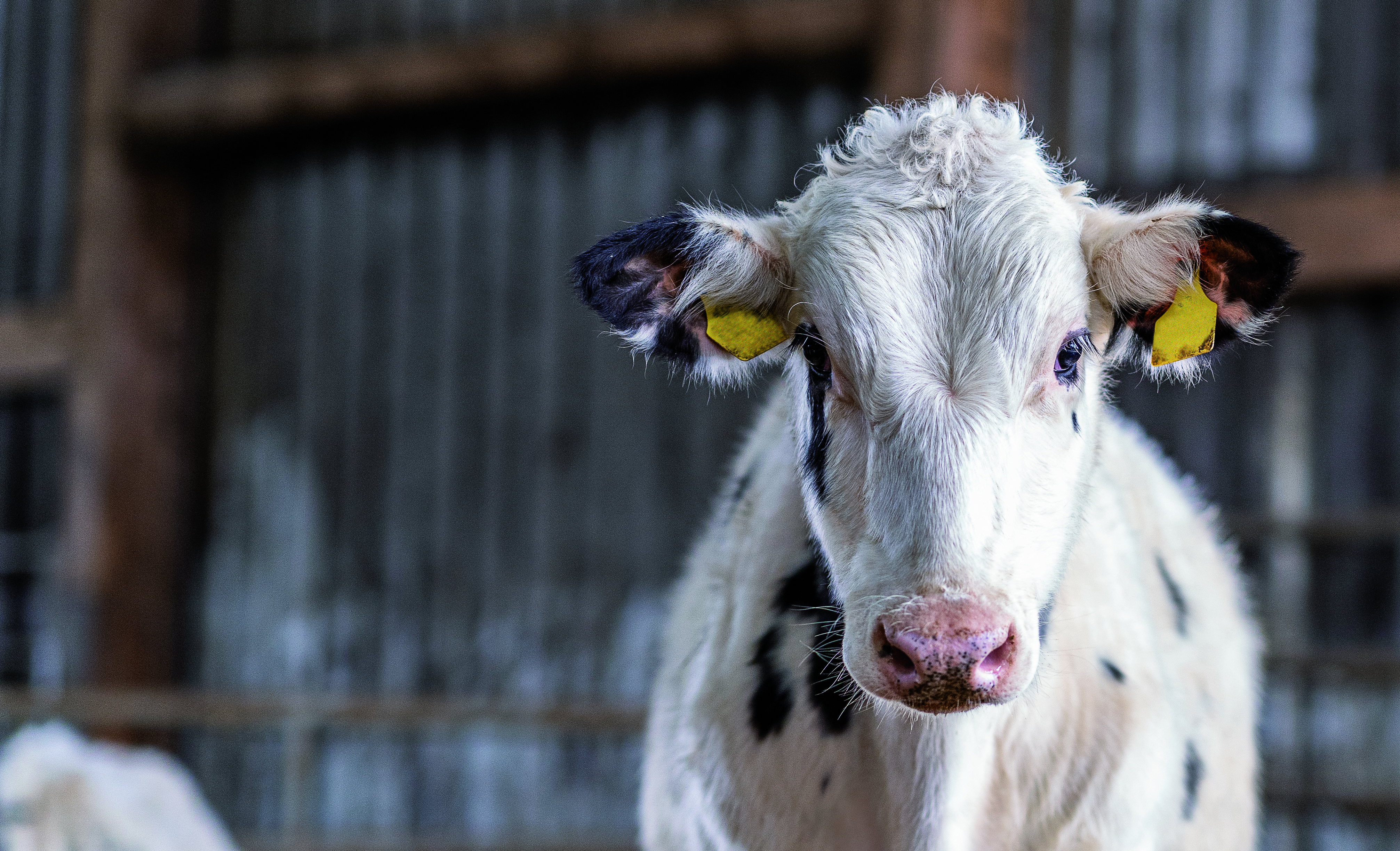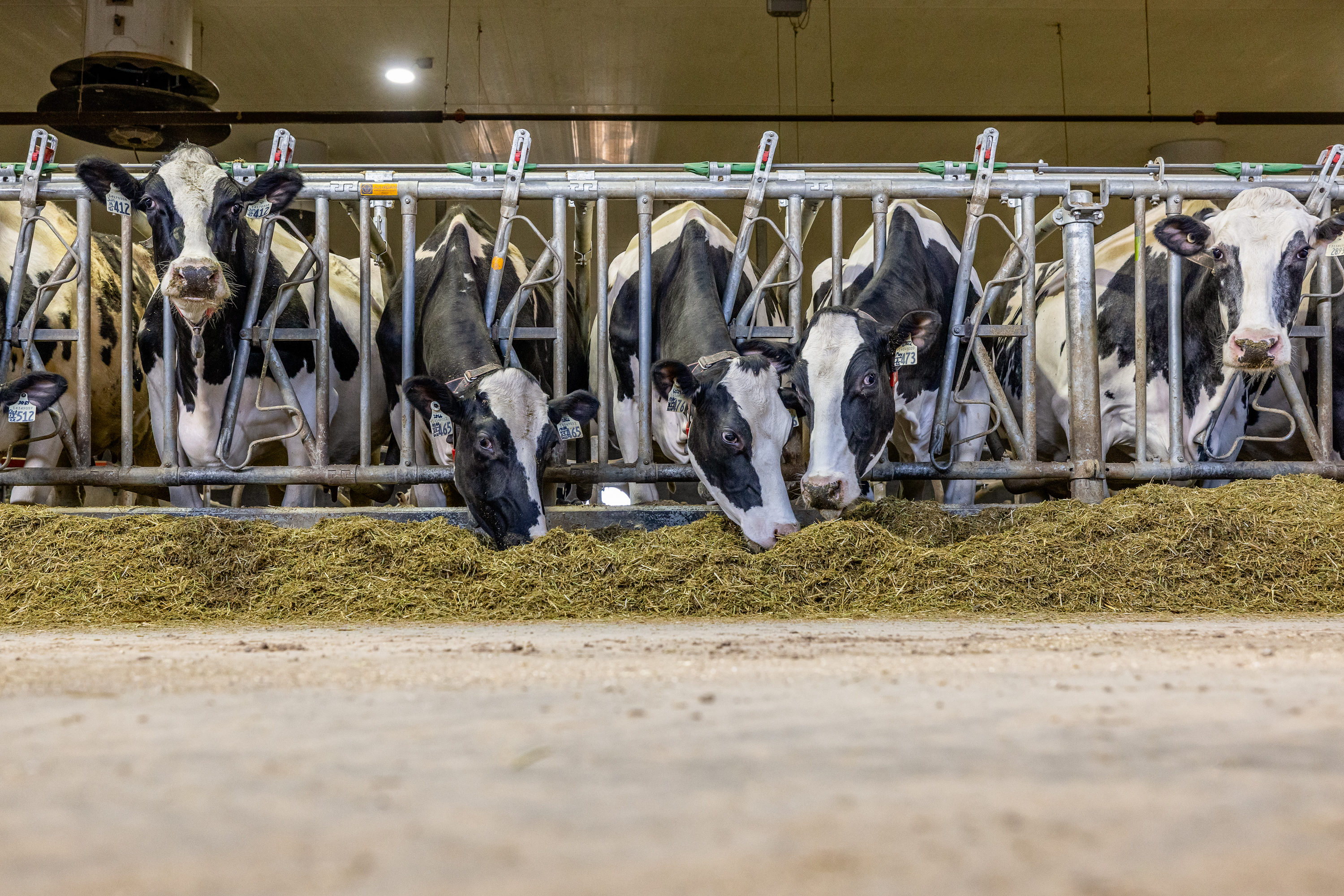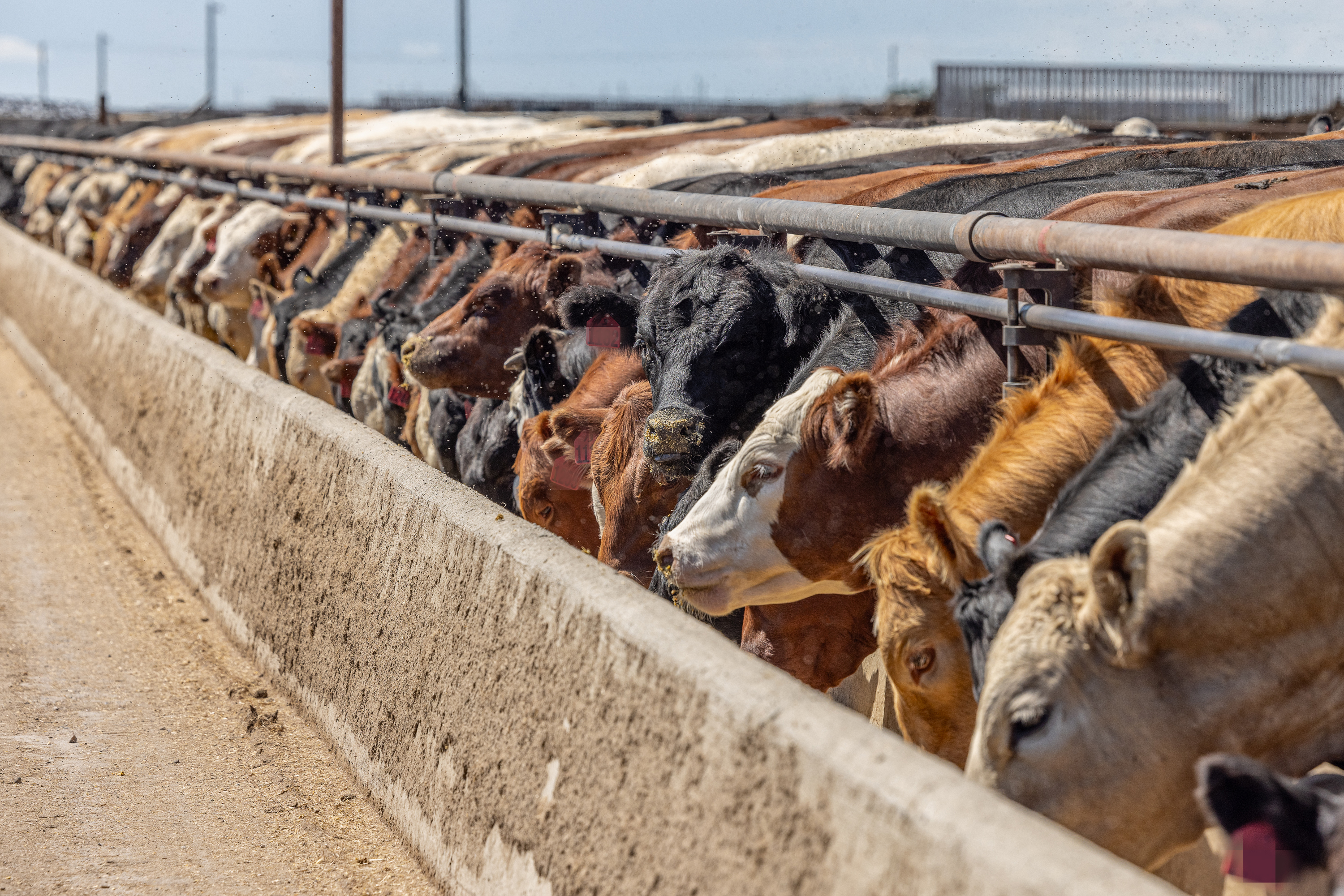Hybrid Rye Grain for Beef and Dairy Cattle
Hybrid Rye for Cattle Pages: Hybrid Rye Forage for Beef and Dairy Cattle | Hybrid Rye Grain for Beef and Dairy Cattle
Hybrid rye grain is a high-quality feedstuff for cattle and can be included successfully into beef and dairy cattle diets. It has a well-balanced nutrient profile when compared to other common cereal grains used to feed cattle in North America such as corn, wheat and barley. Hybrid rye has higher total digestible nutrients, a good crude protein profile and the soluble fibre component of hybrid rye can help promote a healthy rumen.
Average Nutrient Composition of KWS Hybrid Rye Grain, Corn, Wheat and Barley(1,2)
| Composition, Dry Matter Basis | Hybrid Rye | Corn2 | Wheat (hard)2 | Barley2 |
| Proximate Components, % | ||||
| Dry Matter | 89.3 | 86.3 | 87.8 | 87.2 |
| Crude Protein | 12.4 | 7.6 | 14.4 | 9.9 |
| Crude Fibre | 3.8 | 2.3 | 2.7 | 4.7 |
| Ether Extract | 2.3 | 3.6 | 1.8 | 1.6 |
| Ash | 3.3 | 1.2 | 1.9 | 2.2 |
| Carbohydrate Components, % | ||||
| Neutral Detergent Fibre | 19.2 | 10.7 | 13.9 | 18.7 |
| Acid Detergent Fibre | 4.2 | 2.6 | 3.6 | 5.6 |
| Starch | 68.1 | 63.8 | 55.8 | 52.3 |
| Minerals, % | ||||
| Calcium | 0.04 | 0.40 | 0.07 | 0.07 |
| Phosphorus | 0.36 | 0.25 | 0.34 | 0.34 |
| Energy, Kcal/kg | ||||
| Total Digestible Nutrients, % | 90 | 88 | 87 | 84 |
| Net Energy Lactation | 2,094 | 1,960 | 1,860 | 1,710 |
| Net Energy Maintenance | 2,434 | 2,170 | 2,150 | 2,060 |
| Net Energy Gain | 1,669 | 1,490 | 1,470 | 1,400 |
1 Hybrid rye data was collected from 6 Canadian commercial samples 2023-2024, NIR Analysis
2 Corn, wheat and barley data obtained from INRA, 2018 and NRC 2016.
Research has shown that hybrid rye can successfully replace a portion of a barley or corn-based ration without impacting the performance of the animals. For both dairy cattle and feedlot steers, up to 30% of the grain portion of the ration can be replaced with hybrid rye. Due to the high level of rapidly degradable starch in hybrid rye grain, it is recommended to feed a mixed ration which includes grains with a slower starch degradation rate.
Processing Will Maximize the Efficiency of Including Hybrid Rye Grain into Cattle Diets:
- Net Energy % relative to corn
- Unprocessed: 79%
- Dry rolling: 90%
- Steam flaking: 92%.
- Tempering is another option for processing to improve digestibility
Early pollination and KWS PollenPLUS® technology means that KWS Hybrid Rye is less susceptible to fusarium and ergot contamination compared to conventional rye and other cereal grains. It is always best practice to test your feed grains for mycotoxins before use. If mycotoxins are present work with your nutritionist to manage feeding levels.
References:
Rusche, 2020; Buckhaus et al., 2021; Pereira et al., 2022; Wagner et al., 2022; Zhang et al., 2024



